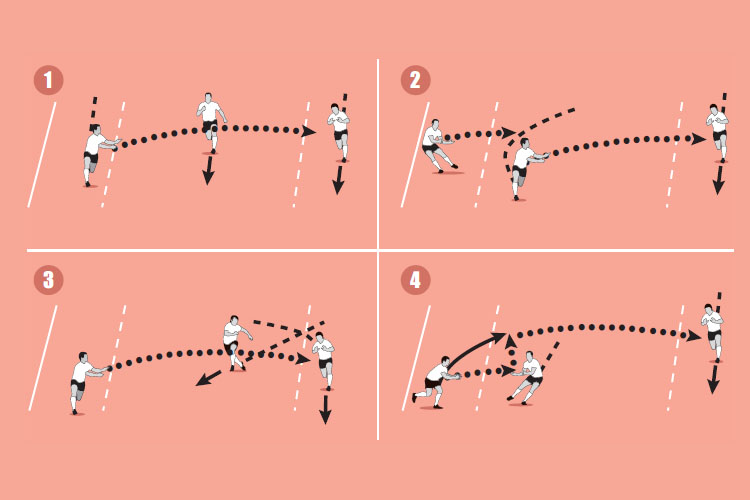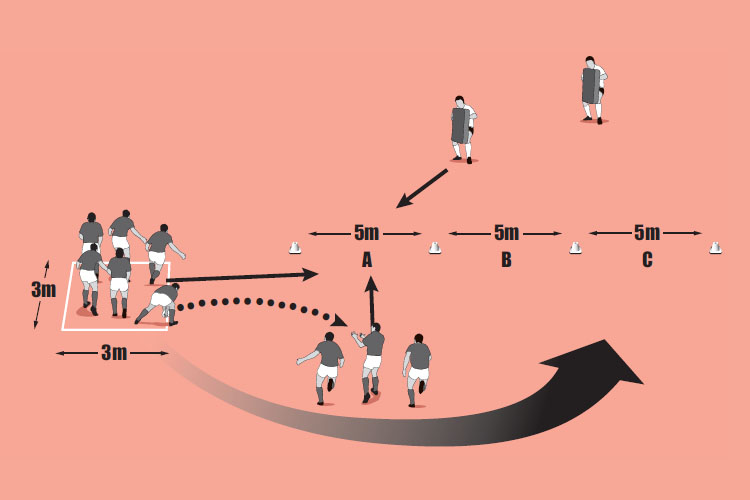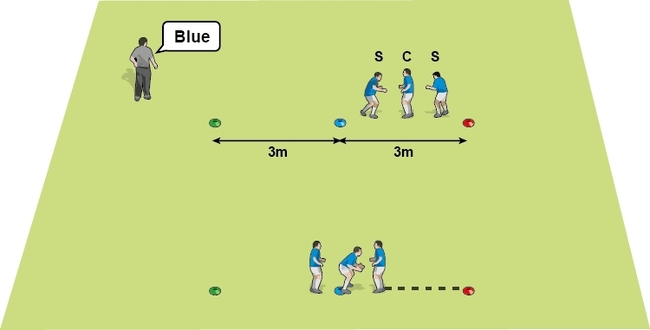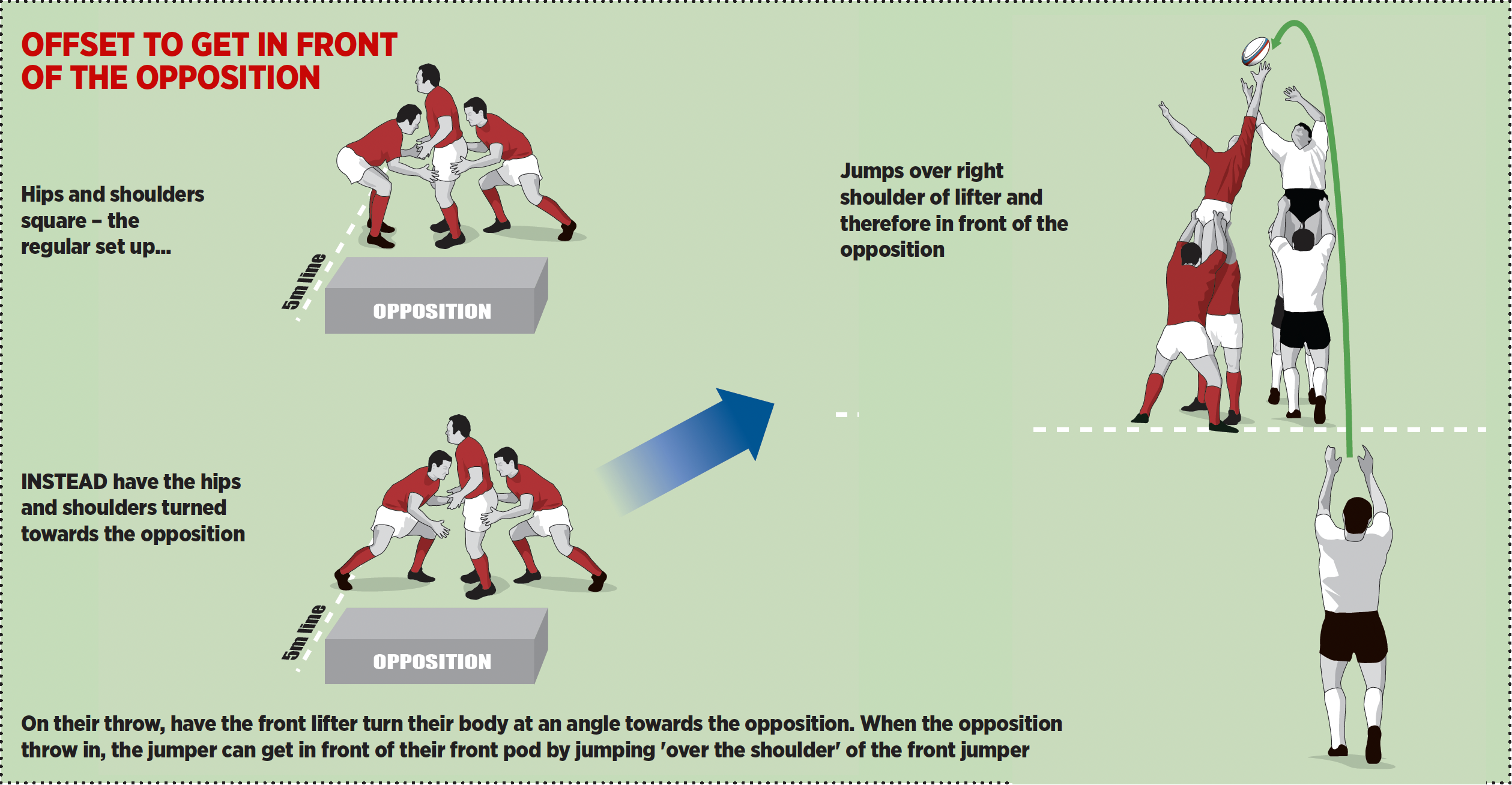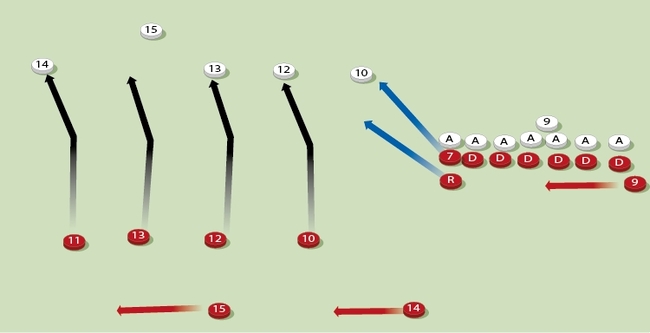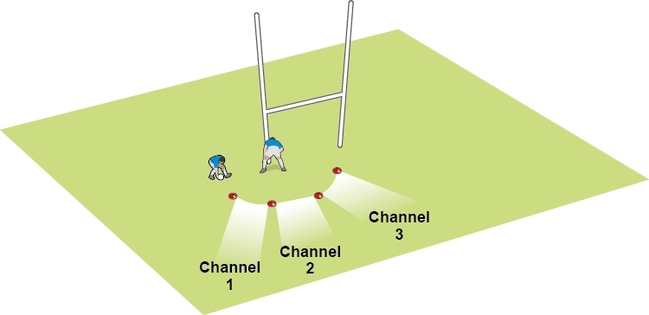Pure lineout timing
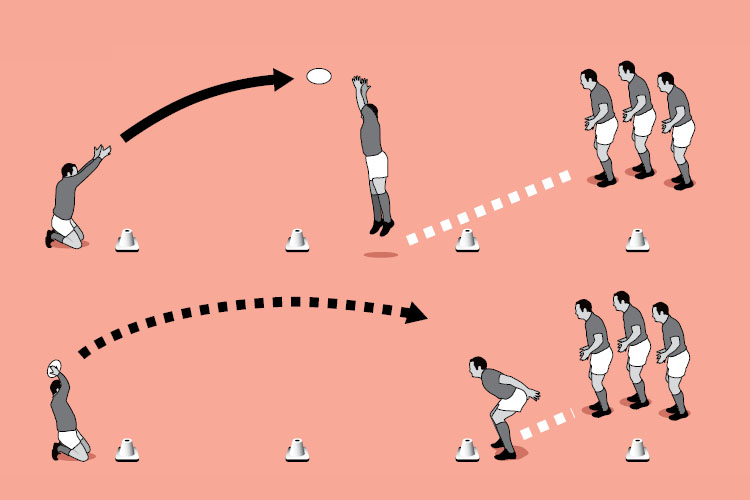
Timing between thrower and jumper continues to be a key aspect for winning the lineout. This sessions develops better timing, leading to a competitive game-like situation. It concentrates on the pure jump only, with no lifting, ensuring that the ball reaches the hands of the receiver at the top of his jump.
Warm up time: 7-10
Session time: 10-15
Development time: 10-15
Game time: 15-20
Warm down time: 7-10
What to think about
How much movement do you want before your player’s jump? Some lineout systems prefer players just to jump straight up, beating the defence with the speed of the throw. Other systems favour more movement. The speed of the jump has greater significance because defending teams can choose to lift two pods if they want, cutting down the possible spaces in which to jump. What is the trigger for the hooker to throw the ball? The jumper may have a hand signal for the thrower, which shows he is about to jump. This has the advantage that it is easier to see than a nod of the head, though it might alert the opposition jumpers at the same time.set-up
- Jumper: move into the lineout, stop and either jump up or step into your jump and jump off two feet.
- Hooker: visualise the target in your mind. Throw to meet the receiver at the top of their jump.
What you get your players to do
Place a hooker on his knees on the touchline. Line up your jumpers at the side of the normal lineout jumping area, opposite the 5m line. The first player enters the lineout area, and jumps to meet a throw from the hooker. Cycle through all your lineout players, and then get them to start further back.Thank you for reading
to enjoy 3 free articles,
our weekly newsletter, and a free coaching e-book
Or if you are already a subscriber, login for full access
Newsletter Sign Up
Coaches Testimonials

Gerald Kearney, Downtown Las Vegas Soccer Club

Paul Butler, Florida, USA

Rick Shields, Springboro, USA

Tony Green, Pierrefonds Titans, Quebec, Canada
Subscribe Today
Be a more effective, more successful rugby coach
In a recent survey 89% of subscribers said Rugby Coach Weekly makes them more confident, 91% said Rugby Coach Weekly makes them a more effective coach and 93% said Rugby Coach Weekly makes them more inspired.
Get Weekly Inspiration
All the latest techniques and approaches
Rugby Coach Weekly offers proven and easy to use rugby drills, coaching sessions, practice plans, small-sided games, warm-ups, training tips and advice.
We've been at the cutting edge of rugby coaching since we launched in 2005, creating resources for the grassroots youth coach, following best practice from around the world and insights from the professional game.





